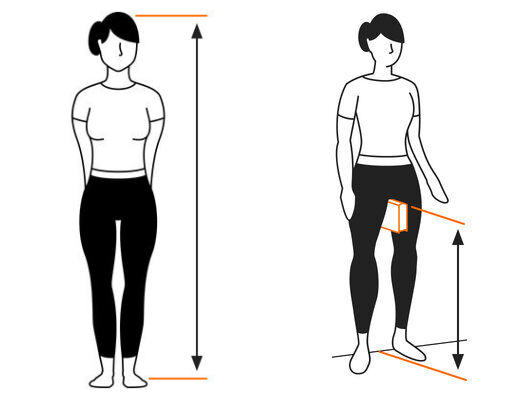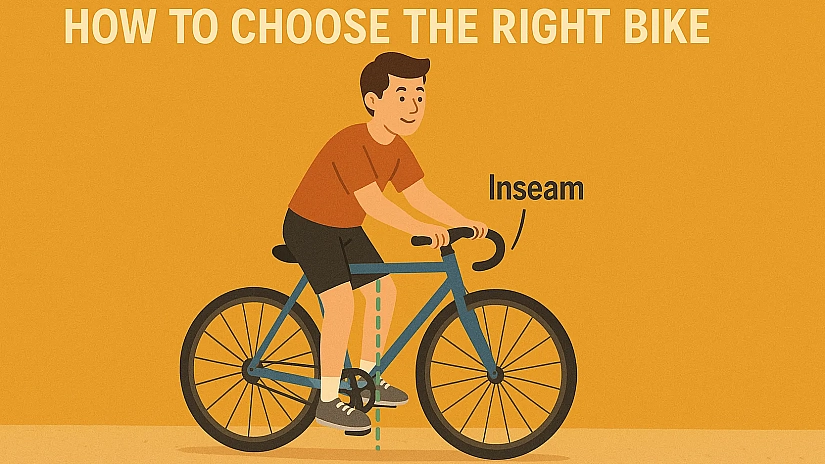Choosing the right bike size is essential for comfort, performance, and injury prevention. A properly fitted bike ensures a smooth ride, improves efficiency, and reduces strain on your body. Whether you're a beginner or an experienced cyclist, this guide will help you determine the perfect bike size based on your height, inseam measurement, and riding style.
Why Bike Size Matters
Riding a bike that’s too big or too small can lead to discomfort, poor handling, and even injuries. Here are some key reasons why getting the right size matters:
- Comfort – A well-sized bike allows for a natural riding posture and reduces fatigue.
- Efficiency – The right fit ensures that your pedaling power is maximized.
- Safety – Proper sizing improves bike control and handling.
- Injury Prevention – Avoids stress on joints and muscles, reducing the risk of knee pain and back strain.
Bike Size Chart by Type
Different types of bikes have different sizing standards. Mountain bikes (MTB) are usually measured in inches, while road bikes are measured in centimeters. Hybrid and city bikes can be measured in either inches or centimeters.
Mountain Bike (MTB) Size Guide
| Rider Height | Frame Size (inches) |
|---|---|
| 150 - 160 cm | 13" - 15" |
| 160 - 170 cm | 15" - 17" |
| 170 - 180 cm | 17" - 19" |
| 180 - 190 cm | 19" - 21" |
| 190+ cm | 21" - 23" |
Road Bike Size Guide
| Rider Height | Frame Size (cm) |
|---|---|
| 150 - 160 cm | 48 - 51 cm |
| 160 - 170 cm | 51 - 54 cm |
| 170 - 180 cm | 54 - 57 cm |
| 180 - 190 cm | 57 - 60 cm |
| 190+ cm | 60 - 63 cm |
Hybrid & City Bike Size Guide
| Rider Height | Frame Size (inches) |
|---|---|
| 150 - 160 cm | 14" - 16" |
| 160 - 170 cm | 16" - 18" |
| 170 - 180 cm | 18" - 20" |
| 180 - 190 cm | 20" - 22" |
| 190+ cm | 22" - 24" |
How to Measure Your Inseam for a More Accurate Fit
While height is a great starting point, the inseam measurement (the length from the ground to your crotch) provides a more precise frame size.

Steps to Measure Your Inseam:
- Stand barefoot against a wall with your legs slightly apart.
- Place a book between your legs, mimicking a bike seat.
- Measure the distance from the ground to the top of the book.
Once you have your inseam measurement, use these formulas to determine frame size:
- Mountain Bike: Inseam * 0.66 = Frame size (in inches)
- Road Bike: Inseam * 0.70 = Frame size (in cm)
Additional Factors to Consider
1. Riding Style
Your riding style plays a crucial role in determining the best bike size:
- Aggressive Riders: May prefer a slightly smaller frame for better control.
- Comfort Riders: A larger frame with an upright riding position is better for long rides.
2. Frame Geometry
Different bike brands have varying geometries. Some frames have a longer reach, while others are more compact. Testing different models helps in finding the best fit.
3. Standover Height
The standover height is the clearance between your body and the bike’s top tube when you stand over it with your feet flat on the ground. A proper fit should leave 1-2 inches of clearance for road bikes and 2-3 inches for mountain bikes.
4. Handlebar Reach
Your hands should comfortably reach the handlebars without excessive stretching. Adjusting the stem and handlebars can help fine-tune the fit.
Bike Fit Adjustments
Even if you have the correct frame size, fine-tuning the bike’s setup ensures the best riding experience:
- Saddle Height: Should allow a slight bend in the knee when the pedal is at the lowest position.
- Saddle Position: Adjust forward or backward for better pedaling efficiency.
- Handlebar Height: Affects riding posture—lower for speed, higher for comfort.
What If You're Between Sizes?
If you fall between two bike sizes, consider these options:
- Choose the smaller frame for better maneuverability and control.
- Choose the larger frame for better stability and comfort on longer rides.
- Adjust components such as the stem, seat post, and handlebars to optimize fit.
Test Riding Before Buying
Whenever possible, test ride a bike before making a purchase. A proper test ride helps assess:
- Overall comfort
- Handling and control
- Leg extension while pedaling
- Arm reach to the handlebars
Final Thoughts
Choosing the right bike size is key to a comfortable and enjoyable ride. By considering your height, inseam, and the type of bike you need, you can make an informed decision. If possible, always test a bike before purchasing to ensure the best fit. A properly sized bike enhances your riding experience and helps prevent injuries, making every ride more enjoyable.

